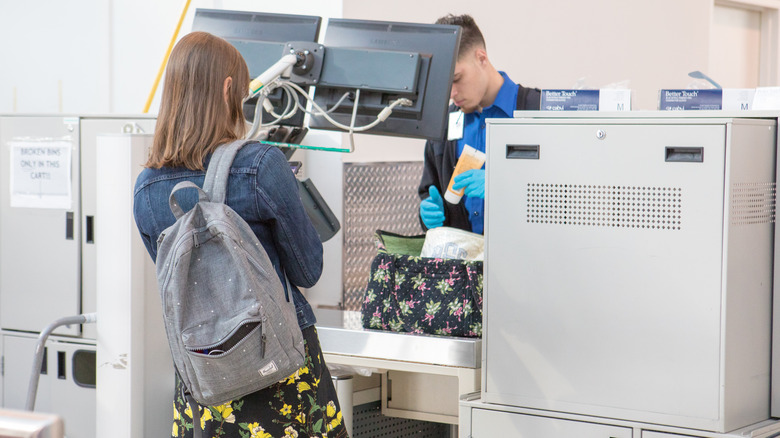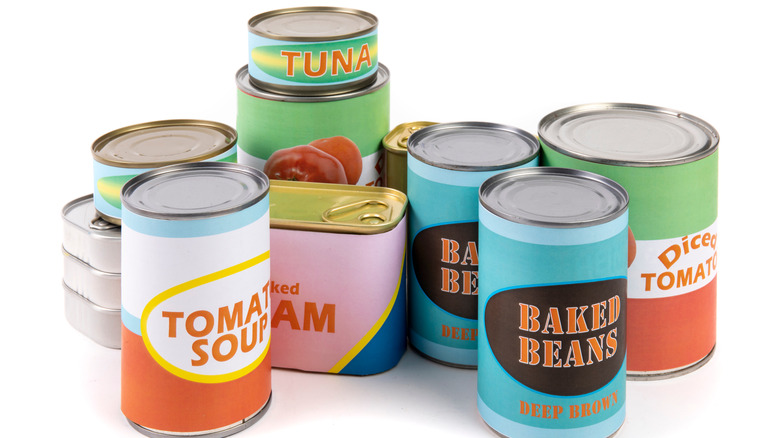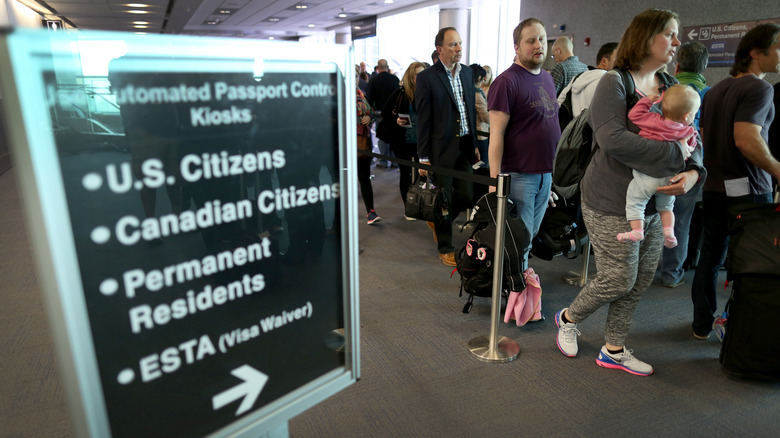Can You Bring Food Through TSA And On A Plane? Here's What You Need To Know
If you're getting ready for a commercial flight, it might be tempting to skip the bag check and pack everything in a good carry-on bag. However, if you're bringing food, you'll need to confirm that all products are TSA-approved for carry-on luggage. Fortunately, most rules regarding domestic flights are fairly simple to follow.
According to the TSA website, solid food items are permissible in both carry-on and checked luggage. So, travelers can easily carry items like bread, cereal, crackers, pies, cakes, pizza, sandwiches, and more. While meat, fruit, and vegetables are generally approved for flights within the continental United States, regulations become more complicated when flying outside of this area.
TSA's 3-1-1 liquid rule, which applies to certain kinds of food, is crucial. As far as carry-on luggage, containers must be 3.4-ounces or less and fit in one quart-sized, plastic, zip top bag (via TSA). Whether you're going on a domestic or international flight, there are other important factors to keep in mind.
Food consistency plays a big role
As you pack your bags, pay attention to the consistency of your food items. Bringing spreadable products and canned goods could potentially be a sticky situation, so be sure to plan accordingly. Talking to Today, TSA spokesperson Lisa Farbstein said, "A can of corn, a can of string beans, a can of pineapple. If you can shake the can and hear the liquid inside, then it would go into your checked bag." The standard can size is more than 3.4-ounces, so any liquid-based food in your carry-on won't pass through TSA.
Unless they are 3.4 ounces or less, it's necessary to put creamy cheese, dips, honey, peanut butter, and yogurt in your checked luggage. Provided that they haven't melted, solid frozen products (including ice) meet TSA carry-on requirements. Medically necessary liquids are the exception to TSA's 3-1-1 liquid rule. So, baby formula, breast milk, and baby/toddler food can exceed 3.4-ounces in carry-on baggage. Fliers traveling with these bigger items should notify a TSA officer at the checkpoint. If you're flying with family, this packing hack could also make going through TSA easier.
Food restrictions for U.S. entry
Unsurprisingly, international travel comes with various food restrictions. Transporting foreign agricultural products runs health and safety risks, as these items could spread pests and diseases (via the United States Department of Agriculture). Travelers are prohibited from carrying foreign meat that may be infected with livestock diseases. TSA also specifies that fliers entering the U.S. from Hawaii, Puerto Rico, and the U.S. Virgin Islands aren't allowed to bring almost all fresh fruits and vegetables.
Since restrictions can be dependent on where you're traveling from and what food you're bringing, you should always check federal agency regulations to make sure your products meet entry requirements. Yet, there's good news if you're unsure or concerned about certain products. First and foremost — whenever entering the U.S. — you need to declare all agricultural and wildlife products to U.S. Customs and Border Protection officials (via the United States Department of Agriculture). In the event that your product isn't approved, you won't face any penalties due to your declaration. Travelers who do not declare food products could receive fines up to $10,000, according to U.S. Customs and Border Protection.


